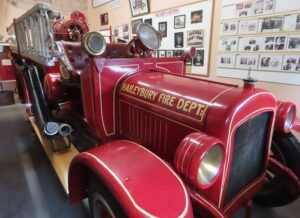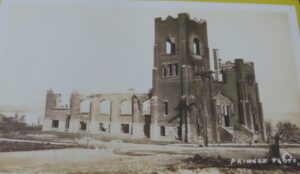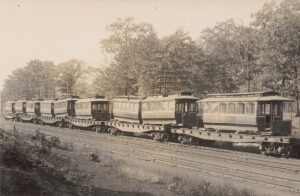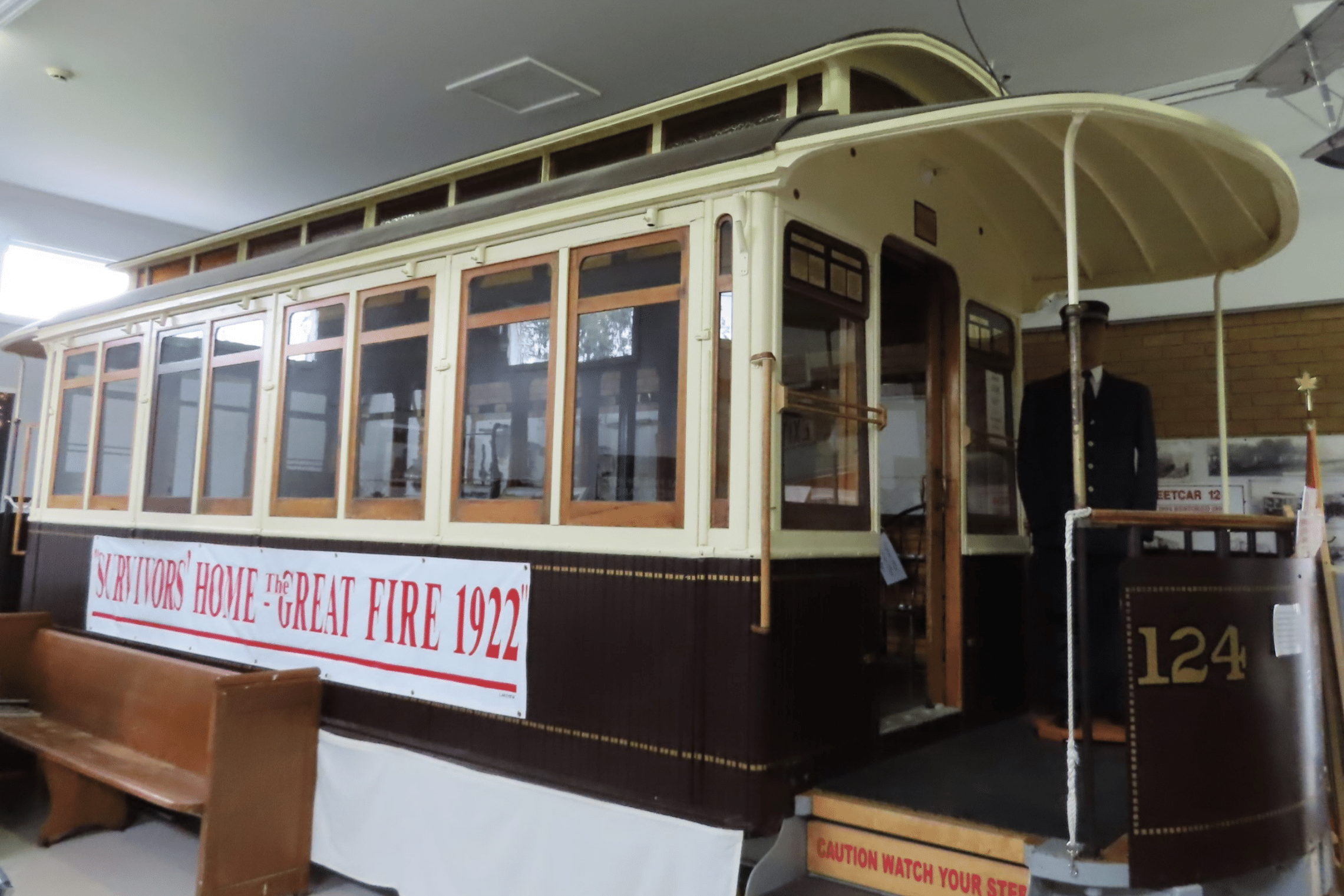Around the World
The Story of Haileybury: A Town Up in Flames
Oct 2023 | By Pat Brennan
HAILEYBURY – One of the worst forest fires in Canadian history wiped out this town in 1922.
The locals who survived the inferno by standing up to their chests in Lake Temiskaming for six hours one cold October night watching their homes burn decided it could never happen again.
They didn’t want to fight future fires with horse-drawn wagons and a bucket brigade; so, they gathered their money and purchased a brand-new pumper fire truck as soon as the flames were smothered by a passing snowstorm.
 That 101-year-old fire truck is still on the job. It’s the last of its kind in the world, and participates in every parade and festival this Northern Ontario town celebrates.
That 101-year-old fire truck is still on the job. It’s the last of its kind in the world, and participates in every parade and festival this Northern Ontario town celebrates.
And there’s lots to celebrate. Haileybury was one of five northern communities wiped out by the raging fire that killed 43 people, but only it rebounded and rebuilt and grew back to its original size.
This was pioneer country in 1922 where adventurous souls were attracted north to clear the dense bush for homesteads and farms and dig out the minerals hidden just below the surface rocks.
It had been a hot and dry summer in 1922, and fire crews were busy since early spring snuffing out forest fires started mostly by lightning strikes and passing steam locomotives.
But all was quiet by mid-September, and the fire crews were disbanded by the Ontario government and sent south. On the first day of October, homesteaders were again issued fire permits to burn the brush as they cleared the land.
Lots of small-fire smoke clouded the sky over Haileybury by noon on October 4th, but there was relief by 4 p.m. when a steady wind moved the smoke out over Lake Temiskaming.
But that wind grew strong and stronger, and by evening it was a gale-force storm that snatched up the small brush fires and carried them faster than a man could run into the surrounding forests.
When the locals realized how big this fire had grown it was too late to escape. The fire consumed 300,000 acres, five towns, and 43 lives before the gale-force winds brought in a snowstorm to finally smother the flames.
With their escape routes on fire, Haileybury’s 2,300 townsfolk turned to their neighbours for help. They picked up their family pets and their children and they waded 20 feet out into the cold waters of Lake Temiskaming.
 Eleven residents took shelter against the fire in the Holy Cross Catholic Cathedral made of stone, but all were killed when the wooden roof caved in.
Eleven residents took shelter against the fire in the Holy Cross Catholic Cathedral made of stone, but all were killed when the wooden roof caved in.
The snowstorm eventually killed the fire, but when the residents came out of the water 8 hours later their homes and most other possible shelters were gone, and winter was coming on strong. Most structures in town were made of wood. Even the sidewalks were wooded.
News of the tragedy soon spread worldwide, and rescue supplies started arriving in the north – mostly food and clothing.
But what the survivors needed most was shelter from the oncoming winter, which is notoriously cruel this far north in Ontario.
The Toronto Transit Commission offered a partial solution.
The TTC had 100 old streetcars sitting in a Scarborough field waiting to be scrapped. They put 87 of the streetcars on a train of flatbeds and sent them north.
 Hundreds of Haileybury residents lived in the TTC streetcars for up to 6 years while new homes were built. Of course, there was no bathroom and no running water. And the streetcars, while in Toronto, operated with a small coal-fired stove on board in winter, but they offered poor protection against a northern Ontario winter.
Hundreds of Haileybury residents lived in the TTC streetcars for up to 6 years while new homes were built. Of course, there was no bathroom and no running water. And the streetcars, while in Toronto, operated with a small coal-fired stove on board in winter, but they offered poor protection against a northern Ontario winter.
The locals altered the streetcars by boarding up some of its windows, adding wallboard and lumber scraps to the outside walls, but the best insulation they had was snow. The residents piled up as much snow as possible against the streetcars’ exteriors to try and block the unyielding winter winds.
A refurbished Toronto streetcar stands today in the Haileybury Heritage Museum, along with the 1922 fire truck to tell the Haileybury story.
In this tragic event, Haileybury’s close neighbours New Liskeard and North Cobalt also suffered extensive fire damage and deaths. Since 2004, the three communities have been amalgamated to become Temiskaming Shores.

